Olympic shooting is a fascinating sport that combines precision, concentration, and skill. With its rich history and various disciplines, Olympic shooting captivates audiences and showcases the dedication of athletes from around the world. Whether you’re a newcomer curious about the sport or a seasoned fan wanting to learn more, this guide will walk you through everything from the different shooting events to the athletes and equipment that make this competition so exciting.
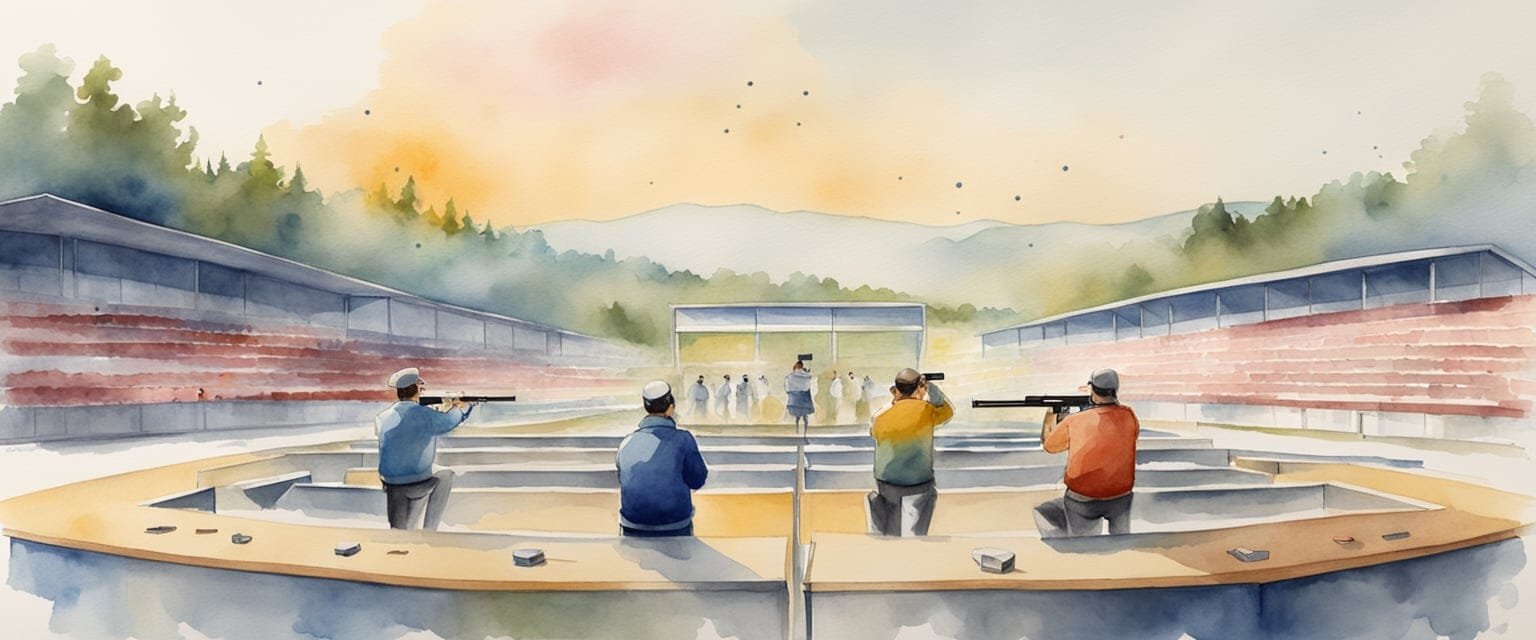
As I explore the world of Olympic shooting, I’ll share key techniques, the structure of the competition, and insights into what makes an elite shooter. The upcoming 2024 Paris Olympics is a perfect time to dive in, as the sport evolves and draws even more spectators. Join me on this journey to discover what this incredible sport has to offer.
Key Takeaways
- Olympic shooting features various disciplines that test different skills.
- Top shooters dedicate years to perfect their techniques and gear.
- Understanding the competition format enhances the spectating experience.
History of Olympic Shooting
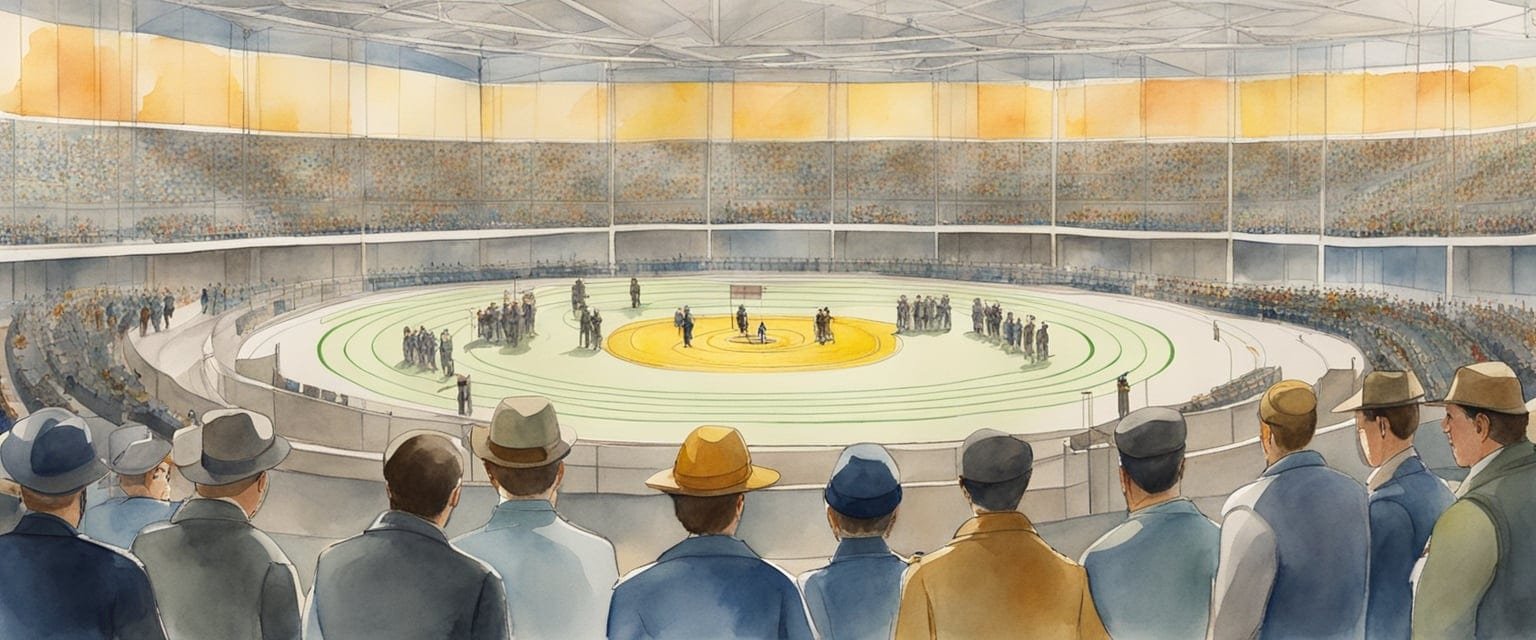
Shooting has a rich history in the Olympic Games, showcasing impressive skills and fierce competition. I find it fascinating to see how the sport has evolved over the years and the memorable moments that have defined it.
Origins and Evolution
Shooting made its Olympic debut at the 1896 Summer Games in Athens. Originally, the events included live pigeon shooting, which was unusual but reflected the sport’s early roots. By the 1900 Games, clay targets replaced live birds for more humane competition.
Throughout the years, shooting events have diversified significantly. Women competed in shooting for the first time at the 1968 Games in Mexico City, marking a crucial step in gender equality in sports. The United States and China have emerged as dominant forces, winning numerous medals. In recent competitions, events like Tokyo 2020, Rio 2016, and London 2012 featured thrilling performances from top shooters and brought global attention to the discipline.
Memorable Moments and Records
Many unforgettable moments have shaped Olympic shooting history. For example, during London 2012, British shooter Peter Wilson secured a gold medal in double trap, thrilling home fans.
At Rio 2016, Chen Yuting from China won the women’s 10-meter air rifle event with a stunning performance. I remember how her composure under pressure set a new world record. Fast forward to Tokyo 2020, and we saw Matt Coward-Holley winning a bronze medal for Great Britain, showcasing that the sport continues to produce exceptional talents.
These remarkable achievements reflect the high skill level and dedication of athletes in Olympic shooting.
Understanding Shooting Disciplines
In Olympic shooting, there are three main disciplines: rifle, pistol, and shotgun. Each discipline has specific events with unique rules, distances, and equipment. Let’s break down each one to understand their key features.
Rifle Events
In rifle shooting, athletes compete mostly with air rifles and smallbore rifles. The events I find most interesting include:
- 10m Air Rifle: This event takes place indoors. Shooters aim at targets from a distance of 10 meters, often using a standing position.
- 50m Rifle 3 Positions: Here, competitors fire from three positions: prone, standing, and kneeling. Each position tests different skills and control.
- Prone Position: This is when the shooter lies flat on their stomach, providing a stable platform. It is crucial for accuracy in long-distance events.
These rifle events focus on precision and control. It’s exciting to see how each athlete adjusts their technique based on the event type.
Pistol Events
Pistol events feature air pistols as well as smallbore pistols. There are two main events I like to highlight:
- 10m Air Pistol: Shooters aim at targets from a distance of 10 meters. This indoor event emphasizes steadiness and focus.
- 25m Rapid Fire Pistol: This event challenges competitors to shoot at five targets quickly. Each shooter has to fire six shots in a set time, which tests both speed and accuracy.
« Ultimate Guide to Olympic Sailing: Tips, Techniques, and Thrills on the Water
Ultimate Guide to Olympic Skateboarding: Everything You Need to Know »
There’s something thrilling about watching the agility and precision needed in pistol events. The way competitors handle their pistols is truly impressive.
Shotgun Events
In shotgun shooting, athletes participate in events like trap and double trap. Here’s a look at these important disciplines:
- Shotgun Trap: In this event, shooters aim at clay targets launched from one end. The goal is to hit each target as it flies away.
- Double Trap: Here, two targets are launched at once. Shooters need to be fast and keen-eyed to hit both.
The shotgun events are all about timing and coordination. I enjoy watching how athletes anticipate the targets and respond quickly to hit them.
Each shooting discipline presents unique challenges, making the Olympic Games an exciting showcase of skill and dedication.
Key Techniques and Positions
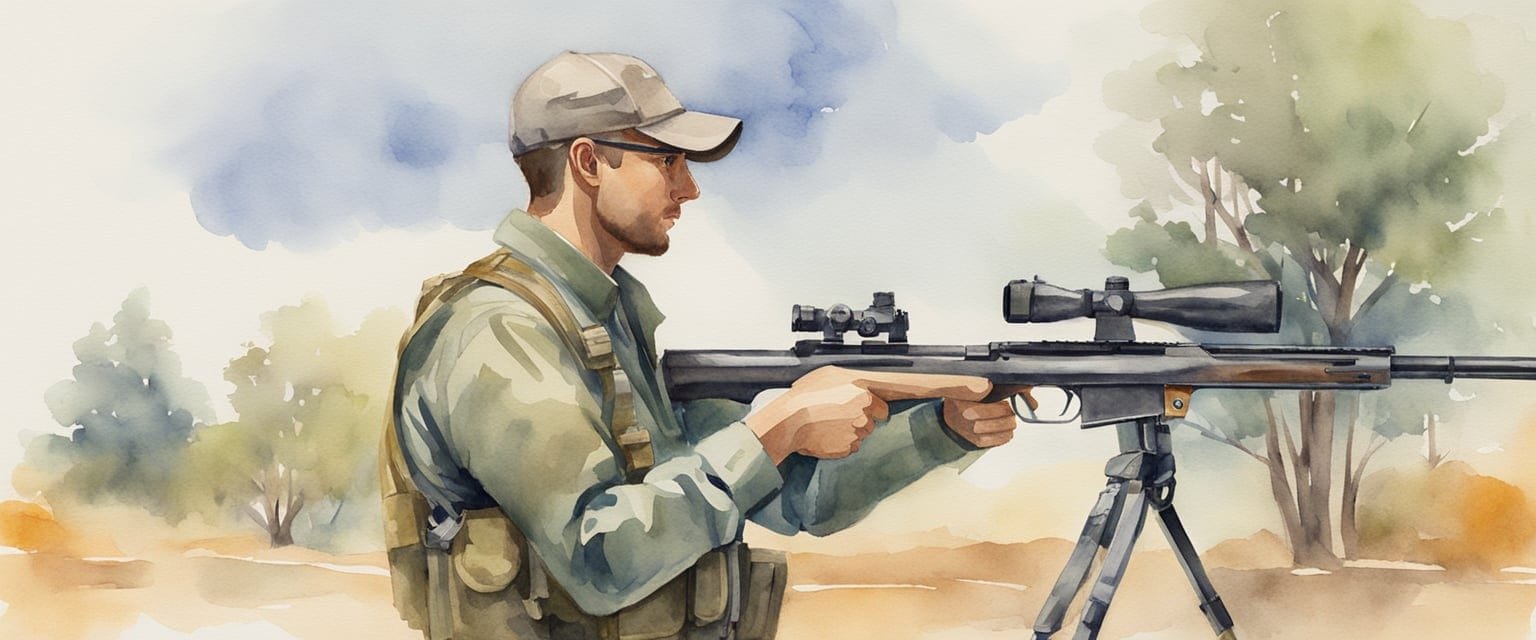
When shooting, mastering a few essential techniques and positions can greatly improve accuracy. I find that focus and practice are crucial for success. Below, I’ll explore the key elements that can help refine your shooting skills.
The Fundamentals of Focus and Precision
Focusing on my target is essential for achieving high precision in shooting. I practice deep breathing to calm my mind and enhance concentration. Before taking a shot, I visualize the target and mentally prepare myself.
Another important aspect is grip. Holding the rifle correctly allows for better control. A steady grip prevents shaking, which can affect aim. I also ensure my posture is aligned, which helps maintain balance and stability during the shot.
Ultimately, my goal is to block out distractions, allowing precision to take center stage.
Shooting Positions: Prone, Standing, and Kneeling
Understanding various shooting positions helps me adapt to different competitions and scenarios.
Prone: This position provides excellent stability. I lie flat on the ground, resting my rifle on a support. It minimizes movement, allowing for precise shots. My elbows remain anchored, keeping my rifle secure.
Standing: This is a more challenging position. I must rely on my core strength to maintain balance. I spread my feet shoulder-width apart and bring my rifle up smoothly. To improve my steadiness, I practice frequently, focusing on my breathing and grip.
Kneeling: This position offers a mix of stability and mobility. I kneel on one knee with the other foot planted for support. I keep my rifle raised, using my elbow as a rest. Like the standing position, I work on my core strength to enhance my control.
Understanding Unsupported Shooting
Unsupported shooting tests my ability to maintain focus and precision without extra support. I often practice this to build confidence and improve my skills.
In unsupported shooting, I must rely solely on my body for stability. This involves careful adjustment of my stance and grip. Typically, I will adopt a natural and relaxed position to avoid strain. Each shot requires heightened concentration, as any minor shake can throw off my aim.
I also practice controlling my breathing during these shots. Taking deep breaths helps me stay calm while aiming. With consistent practice, I find that my accuracy improves even in this challenging style.
Top Olympic Shooters
In this section, I’ll highlight some of the most impressive Olympic shooters I’ve come across. From established champions to rising stars, these athletes showcase remarkable talent and dedication in the sport.
Profiles of Olympic Champions
One standout in the world of Olympic shooting is Vincent Hancock. He is a two-time gold medalist in the skeet event and known for his incredible focus and skill. His ability to perform consistently under pressure truly sets him apart.
Another notable shooter is Seonaid McIntosh, who has made waves as a top competitor in the women’s events. She represents Team GB and has shown great promise, winning medals at major championships.
Matthew Coward-Holley is also worth mentioning. He has gained attention as a top talent in recent competitions. His sharp shooting has positioned him among the best in the sport, and I’m excited to see how he performs in future events.
Rising Stars to Watch
As I explore the future of Olympic shooting, I can’t help but notice several rising stars. Among them is Ella Purnell, a young talent who is making a name for herself in the air rifle categories. Her determination and precision have caught my eye.
Another shooter worth mentioning is junior competitor William Perkins. Despite his age, he has already secured medals at youth championships. I believe he has a bright future ahead in the Olympic arena.
These athletes, along with established stars, keep the sport dynamic and thrilling. It’s exciting to see how they continue to develop and represent their countries on the global stage.
The Competition Format

The competition format in Olympic shooting is structured to ensure fairness and excitement. It includes several stages, from qualification rounds to finals, and features various event categories. I’ll explain how these rounds work and what to expect during the events.
Qualification Rounds and Finals
In most shooting events, the qualification rounds set the stage for the finals. Each shooter aims to score as high as possible to secure a spot in the final ranking. For instance, in pistol events, competitors fire 60 shots within a set time.
The top shooters, usually around eight, advance to the finals, where scoring takes a new twist. Here, they shoot additional rounds. The scores from the qualification are not carried over. Instead, it’s a fresh start to see who can grab the medal.
Mixed Team Events
Mixed team events are a unique and exciting part of Olympic shooting. Each team consists of one male and one female shooter. Together, they compete against other teams in a combined format.
During these events, both shooters fire at stationary targets. Their scores are added together, creating a team total that determines their ranking. It promotes teamwork and strategy. It’s thrilling to watch as teams work together to hit that perfect bullseye and secure their chance at a medal.
Understanding Scoring and Targets
Scoring in Olympic shooting varies depending on the type of event. In rifle and pistol competitions, shooters aim for stationary targets, focusing on hitting the center. Each shot is worth points based on its accuracy. The closer to the bullseye, the higher the score.
In shotgun events, like trap shooting, competitors aim at flying clay targets. Each hit counts towards their final score. Knowing how the scoring works helps viewers appreciate the precision needed in each shot, especially when medals are on the line.
Equipment and Gear

In Olympic shooting, having the right equipment is crucial for success. It enhances performance and ensures safety. Here’s what you need to know about firearms, ammunition, and safety gear.
Choosing the Right Firearm
Selecting the correct firearm is essential for any shooter. For rifle events, I would recommend an air rifle or a .22 caliber rifle. Each has specific rules and characteristics. For example, an air rifle typically uses .177 caliber pellets and should not exceed 7.5 joules.
In shotgun events, I prefer a 12-gauge shotgun for its versatility. This gauge allows me to shoot at moving targets effectively. When choosing any firearm, it’s important to consider factors like weight, balance, and comfort. I also find that experimenting with different models helps me to discover what works best for my shooting style.
Ammunition: Pellets and Gauges
When it comes to ammunition, I always go for quality. For air rifles, I choose pellets that fit snugly in the chamber. The right size affects accuracy. I usually look for lead pellets as they are reliable and do not damage the barrel.
For shotguns, selecting the correct gauge is vital. A 12-gauge is popular in competition because it provides a good balance of power and control. I pay close attention to the type of shot I use, too. Smaller shot sizes work better for clay targets, while larger sizes help in hunting scenarios.
Safety Gear and Accessories
Safety is my top priority when shooting. I always wear protective eyewear to shield my eyes from any debris or misfires. A specific item I find helpful is a side blinder, which covers my non-shooting eye. This helps me focus better on my target.
I also make sure to wear ear protection. I prefer electronic earmuffs that can amplify sounds while blocking harmful noise levels. Besides these basics, I use a shooting jacket for comfort and improved posture. Accessories like shooting gloves and mats enhance grip and stability, making my sessions more enjoyable and safe.
Olympic Shooting Venues
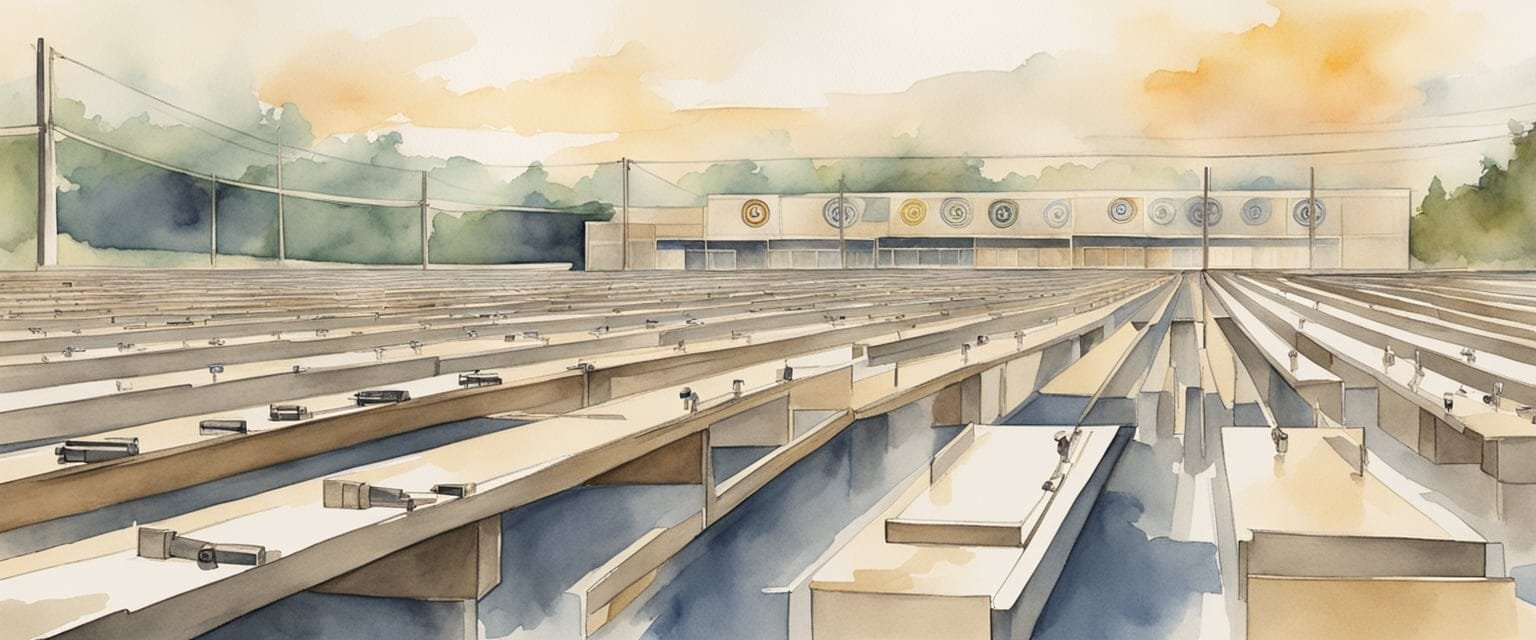
When it comes to Olympic shooting, the venues play a key role in providing a world-class experience for both athletes and spectators. These ranges must meet high standards for safety and technical precision, ensuring fair competition.
Iconic Shooting Ranges
One of the most notable shooting venues was the Asaka Shooting Range during the Tokyo 2020 Olympics. This range featured modern facilities and well-designed layouts to host various shooting events. It had multiple ranges to accommodate disciplines like rifle, pistol, and shotgun.
Another upcoming venue is the Châteauroux Shooting Centre in France, which will host the 2024 Paris Olympics. This facility is one of the largest in Europe, covering over 240 acres. It includes both indoor and outdoor ranges, allowing for diverse shooting events.
Upcoming Events and Locations
For the 2024 Olympics, I’m particularly excited about the array of shooting events planned at the Châteauroux Shooting Centre. The shooting competitions will run from July 27 to August 5, 2024.
This venue will showcase a total of 15 Olympic shooting events and will cater to various categories, including rifle, pistol, and shotgun events. With its capacity and facilities, it promises to be an unforgettable experience for athletes competing for gold.
As I follow the developments at these venues, I can’t help but feel excited about the athletes who will demonstrate their skills at such impressive locations.
Preparing for the Olympics
Getting ready for the Olympics is a blend of solid training, teamwork, and mental focus. I find that each aspect plays a crucial role in achieving peak performance as a shooter.
Training Regimens for Shooters
My training regimen focuses on consistent practice and skill development. I dedicate several hours each day to honing my technique. This includes dry firing at home, practicing live fire drills, and working on various shooting positions.
I also prioritize working with my coach and teammates. This group dynamic helps in setting benchmarks and challenging each other. We create specific drills that mimic competition scenarios. For example, I might practice shooting under timed conditions to simulate actual events.
Key Areas to Focus On:
- Consistency: I aim to replicate the same shot process every time.
- Variety: I mix up my training routines to cover all aspects of shooting.
- Feedback: Getting constructive feedback from my coach helps refine my skills.
Mental and Physical Conditioning
Maintaining both mental and physical fitness is essential in my Olympic journey. I incorporate strength training into my weekly routine. This includes exercises that build core stability and arm strength. Keeping fit helps minimize fatigue during competitions.
In terms of mental conditioning, I practice visualization techniques daily. I close my eyes and picture myself at the range, taking each shot with precision. Breathing exercises are also part of my routine to help manage stress.
Strategies I Use:
- Visualization: Imagining success boosts my confidence.
- Mindfulness: Staying present during training helps improve focus.
- Team Support: My teammates often help me stay motivated and focused.
Preparing for the Olympics is challenging, yet incredibly rewarding. Each part of my preparation is essential for achieving my goals.
Rules and Regulations
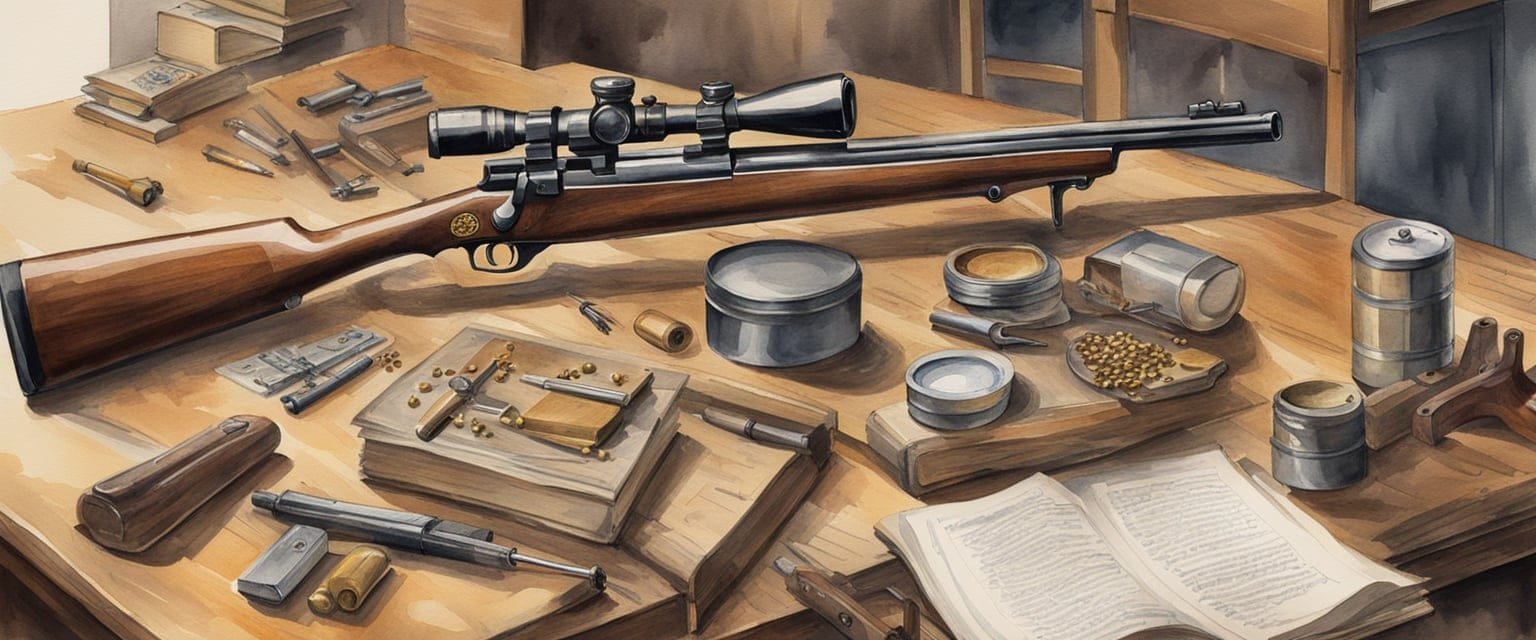
In Olympic shooting, safety and adherence to guidelines are top priorities. Understanding the rules helps ensure fair play and the well-being of all participants.
Safe Shooting Standards
Safety is crucial in shooting sports. I always make sure to follow strict safety standards set by governing bodies. Every shooter must wear protective eyewear and hearing devices.
Additionally, range officers enforce specific rules. For example, all guns should remain pointed downrange when not in use. When handling firearms, I must remain calm and focused.
Before each event, athletes perform safety checks. This includes ensuring the equipment is in good condition. Following these standards protects me and everyone on the range.
Governing Bodies and Guidelines
The International Shooting Sport Federation (ISSF) is the main governing body for Olympic shooting. They create detailed guidelines on rules, events, and athlete conduct.
For example, ISSF rules specify the types of firearms allowed in competitions. They also define the scoring systems used in events. Each event has unique rules that athletes must follow.
During the Summer Games, organizations coordinate to ensure compliance with ISSF standards. This collaboration keeps the competition fair and enjoyable for everyone involved, while also enhancing the sport’s integrity. By understanding these guidelines, I can compete confidently and safely.
Spectating and Supporting
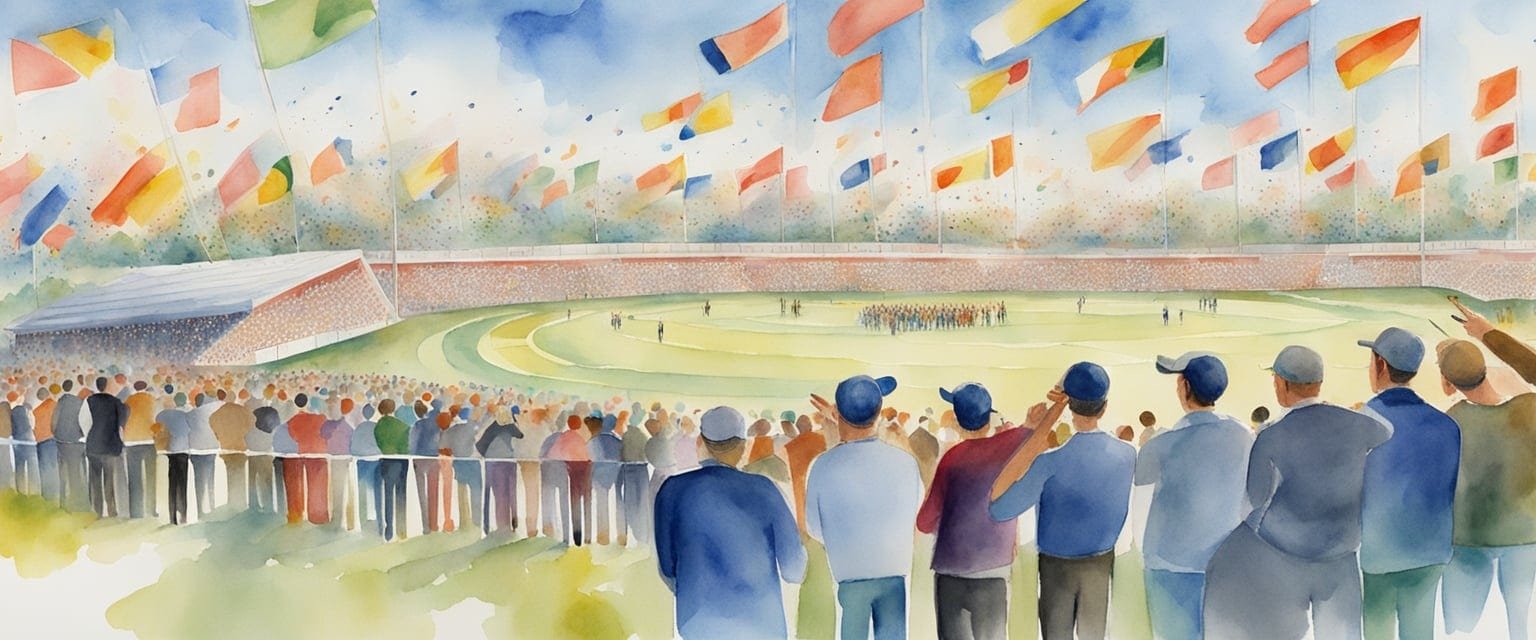
Watching Olympic shooting is an exciting way to experience the competition and cheer for your favorite athletes. Whether it’s following their journey or simply enjoying the events, there are many ways to stay engaged during the games.
How to Follow Olympic Shooting
I can easily keep up with all the Olympic shooting events by checking the official Olympic website. It provides a full schedule of events, including key details about times and venues in Paris.
For example, events like the women’s 10m air rifle and men’s trap will have specific time slots that I can mark on my calendar.
I recommend following news outlets and sports channels for updates on results and highlights. Social media is another great way to catch exciting videos and photos. Many teams share behind-the-scenes content, making it feel special and personal.
Supporting Teams and Athletes
Cheering for my favorite athletes can make the experience more enjoyable. I often wear team colors or gear to show my support.
Connecting with fellow fans through social media adds to the excitement. I can join groups dedicated to Olympic shooting, where we share news, discuss events, and celebrate wins.
If I’m watching the events live, cheering loudly for the athletes can be electrifying! I also love keeping an eye on my favorite sports networks that showcase interviews and stories about the shooters.
In these moments, it’s powerful to show my passion and encourage the athletes as they represent their countries. Every cheer counts!
Frequently Asked Questions
In this section, I’ll address common questions about Olympic shooting. I’ll cover the rules, types of firearms, and specific equipment for different events.
What are the current rules and regulations for Olympic shooting competitions?
Each Olympic shooting event has specific rules set by the International Shooting Sport Federation (ISSF). These include details on scoring, time limits, and shooting positions. Competitors must follow strict guidelines for safety and equipment as well.
Can you list the different firearms used in Olympic shooting sports?
Olympic shooting sports use various firearms, including rifles, pistols, and shotguns. Events can require .22 caliber rifles and air pistols. The choice of firearm often depends on the specific shooting discipline being contested.
How does Olympic pistol shooting differ from other shooting events?
Olympic pistol shooting focuses on precision and accuracy at short ranges. Unlike rifle events, pistol events require athletes to shoot from both standing and other positions. The rules for scoring and time limits may also vary compared to rifle or shotgun competitions.
Which events are included in the Summer and Winter Olympic shooting categories?
Shooting events are mostly featured in the Summer Olympics, including rifle, pistol, and shotgun disciplines. The Winter Olympics do not have specific shooting events, but biathlon includes shooting as part of the race. This combination tests both skiing and shooting skills.
What specific equipment is needed for the 10m air rifle shooting event?
For the 10m air rifle event, I need an air rifle that meets specific weight and caliber standards. Athletes also use shooting jackets, trousers, and gloves designed for stability and comfort. A suitable shooting mat is also essential for proper shooting posture.
What are the various types of shooting sports recognized in the Olympics?
Olympic shooting includes several types of sports: rifle, pistol, and shotgun. Each type has different events that test various shooting skills. Events can vary in distance, position, and target type, making it a diverse discipline within the Games.
